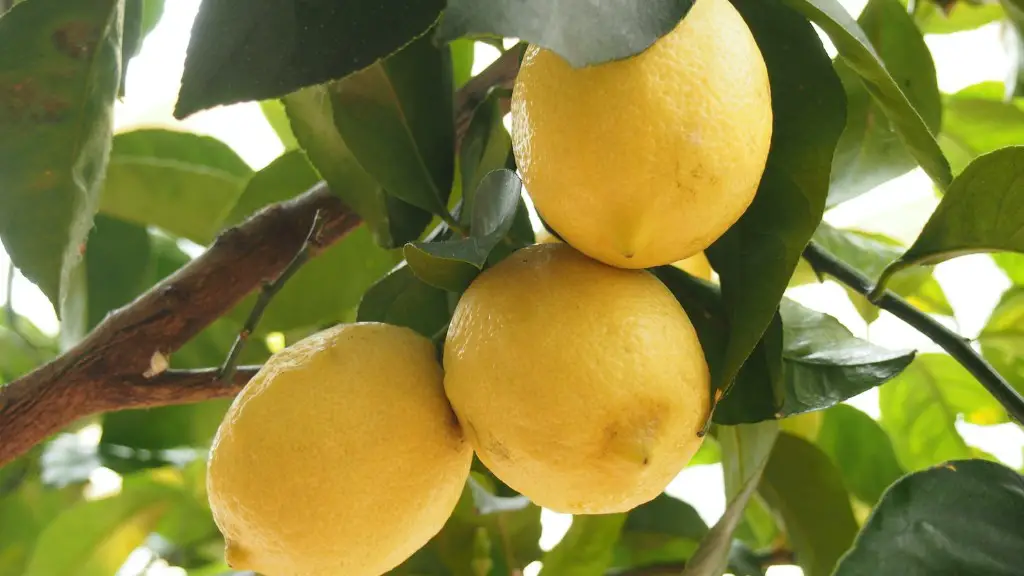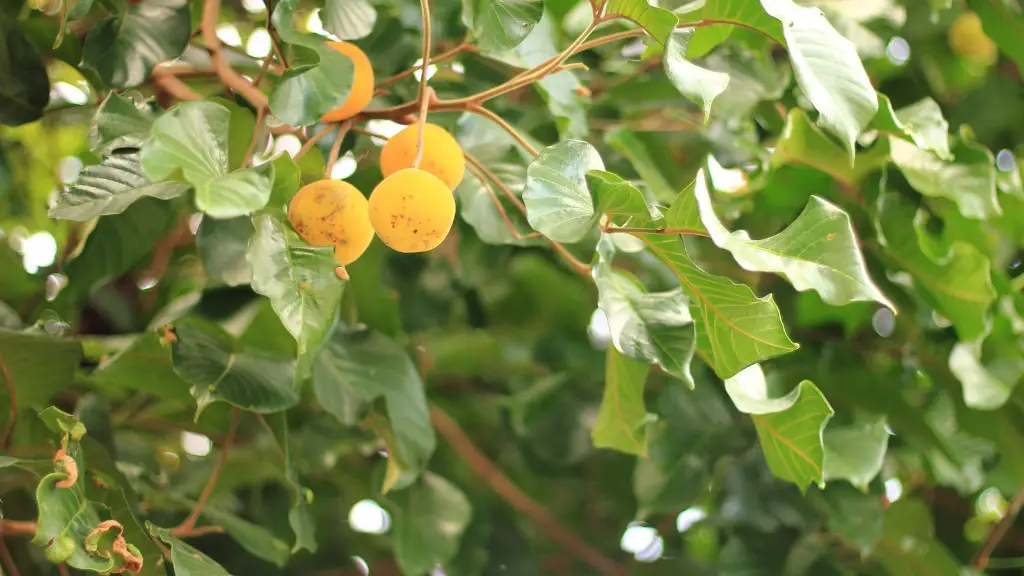Lemon trees are a popular addition to many home landscapes. Lemons are produced on a tree that grows to 20 feet tall and can live for many years with proper care. While lemon trees can be transplanted at any time of year, the best time to transplant is in the early spring before the new growth begins.
The best time to transplant a lemon tree is in late winter or early spring.
How do you know when to repot a lemon tree?
Lemon trees do great as container plants but generally speaking, one would need to repot them every few years. Roots growing out the bottom is a good sign that it is time to upgrade to a bigger pot. There is no trick to repotting a lemon tree. Just be sure to use a pot that is big enough to accommodate the roots and provide good drainage.
When transplanting, ideally you would do so in the spring or early fall, just before or just after the onslaught of summer heat. Early morning is the best time to transplant as a precaution against desiccation of the root ball.
How do you transplant a lemon tree
Meyer lemon trees are a type of citrus tree that is prized for its delicious fruits. If you live in an area with a climate that is conducive to Meyer lemon trees, you may be thinking about planting one in your yard. Transplanting a Meyer lemon tree is not difficult, but there are a few things you need to do to ensure that the tree takes well to its new location.
First, you need to sever the roots of the tree. This can be done with a sharp knife or pruning shears. Next, water the tree well. Then, use a spade to dig under the root ball of the tree. Once the root ball is freed, wrap the trunk of the tree in burlap. This will help to protect the tree during the transplanting process.
Next, till the soil in the planting hole. This will help the roots of the tree to take hold in the new location. Then, spread the roots of the tree out in the planting hole. Finally, place the root ball of the tree in the hole and backfill with soil. Water the tree well and keep it watered regularly for the first few weeks after transplanting. With a little care, your Meyer lemon tree will thrive in its new location
Lemon trees are popularly grown in containers and they offer a lot of benefits. However, one downside is that they are more vulnerable to the cold and drought. While a lemon tree in the ground can take mild frost and cold, a lemon tree in a container cannot. A lemon tree in a container has a hardiness zone that is one zone higher than the USDA recommended zone. Thus, it is important to take extra care of your lemon tree during colder months and provide adequate water during times of drought.
Do lemon trees need deep pots?
When choosing a container for your citrus tree, it is important to consider the size of the tree. Mature trees need pots double that width and at least 18 to 24 inches deep. This gives roots growing room and prevents tippy, top-heavy trees. Any pot material works as long as there are ample drainage holes in the bottom.
Citrus plants like to be somewhat root-bound in a pot. We’ve grown some of our most productive Meyer Lemon plants in 8″ pots for years. We use a standard soil-less mix of peat moss, perlite, vermiculite and composted bark.
How do you winterize a lemon tree?
Trees require a lot of light in order to grow, so it’s important to move them to a south-facing window or a bright room. The ideal temperature range for trees is between 55 and 68 degrees Fahrenheit. Keep them away from heating vents or drafty areas to prevent them from drying out. Citrus trees also require humidity, so you should provide a supplemental form of humidity, such as a humidifier.
Lemon trees are a great addition to any home, and they can be grown in pots! Growing lemon trees in pots is a great way to keep them healthy and happy, as they can’t cope with temperatures lower than 40°F (5°C). Lemon trees need a lot of care and attention, so be sure to give them plenty of TLC!
When should you not water a lemon tree
A newly potted plant needs to be watered well every alternate day – deep watering is essential so that the root ball gets the necessary hydration Once the plant is somewhat established, watering can be tapered to twice a week and then once a week or so.
Lemon trees can make a great addition to the home landscape, but they need to be planted in full sun in order to thrive. They should be placed 15 to 25 feet away from other trees and structures, as they may not grow properly or produce fruit if they are too close to shade.
Do lemon trees do well in pots?
If you experience cooler weather during the fall and winter months, growing a potted lemon tree indoors is a great way to sustain the plant all year long. Since these trees are self-pollinating, only one is needed to produce fruit. Potted lemon trees need full sun, well-drained soil, and regular watering. Be sure to fertilize your tree monthly during the growing season. With a little work, you can enjoy fresh lemons all year long!
When transplanting a lemon tree, it is important to dig a large and deep root ball. This can be done by gently rocking the tree from side to side, and sliding a tarp, burlap, strong plastic, or other relevant material underneath the root ball. Carefully remove the tree, making sure to keep the root ball intact.
Is Miracle Grow potting mix good for lemon trees
This is an excellent potting mix for growing cactus, palm, citrus and other succulents. It is a specially blended mixture of sphagnum peat moss, composted forest products, sand and perlite. This mix will help your plants to thrive and look their best.
Lemon trees are one of the easiest citrus trees to grow indoors and make for a great low-maintenance plant. They require full sun, which means about 6 to 8 hours of direct sunlight daily. For indoor growth, simply place them in front of a south-facing or sunny window.
Can I use regular potting soil for my lemon tree?
Citrus trees need well drained soil, so selecting the right potting mix is important. Commercial potting mixes with peat moss, perlite, vermiculite and compost are fine as long as the soil is light enough to drain water well.
If you’re looking to grow a lemon tree, the best place to put it would be in a south-facing window. The plant needs a lot of light to produce flowers, and without flowers, there won’t be any lemons! If you’re not sure if your window gets enough light, you can supplement with a grow light.
What are three common problems that lemon trees can have
Lemon trees are susceptible to a number of problems, including citrus canker, sooty mold, botrytis blight, anthracnose, and lemon scab. Lesions on leaves are the most common symptom of citrus canker, and can be treated with a fungicide. Sooty mold is caused by aphids and other sap-sucking insects, and can be controlled with insecticides. Botrytis blight is a fungal disease that affects lemons and other fruits, and can be treated with fungicides. Anthracnose is a fungal disease that affects a variety of plants, including lemons, and can be treated with fungicides. Lemon scab is a fungal disease that affects lemons and other citrus fruits, and can be treated with fungicides.
Lemon trees are popular household plants because they are easy to care for and produce fragrant flowers and fruit. While lemon trees can live for 30-50 years, indoor potted trees tend to have shorter lifespans than trees planted in the ground outdoors. With proper care, however, lemon trees can grow to over 100 years old.
Final Words
Lemon trees can be transplanted at any time of year. However, the best time to transplant a lemon tree is during the tree’s dormant period, which is usually from late fall to early spring.
When to transplant lemon tree? The best time to transplant a lemon tree is during the late fall or early winter, when the tree is dormant. Transplanting during this time will minimize the stress on the tree and give it the best chance to recover and thrive in its new location.




